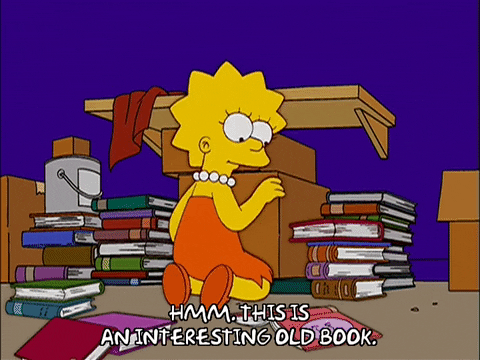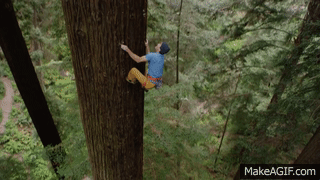Ideas of how to talk about my Rare Book Librarianship course thus far have percolated in my brain for a few weeks now, and so these next two issues will deal with the first four weeks of that course: where we’ve come from as a field and where we could go.
I spent a lot of time over the summer talking about where we’ve come from in terms of the history of book collecting. That history is closely tied to the history of rare book librarianship, which differs from rare book curatorship in that it has a lot of other responsibilities besides finding, buying, describing, and interpreting books. Rare book librarians fulfill many other roles in reference, instruction, outreach, donor cultivation, advocacy, public relations, and so on. Playing with cool books is one of the perks, for sure, but it is subordinate to other missions of the library.

This wide range of responsibilities was not always the case, however. There was a time where “curator of rare books” was a bonafide position at many libraries, and the lucky person who filled it did get to jet off to Paris to buy books at every corner antiquarian shop that met his eye. The old-school approach to Curator as Job has withered as funding for libraries and the social value of special collections libraries has similarly waned: the less money we have, the fewer staff we can hire, and the more job responsibilities each person has to take on (a phenomenon called job creep). These days, libraries are more likely to designate a staff member the Curator of [insert subject, region, or time period here], often within their subject specialty. Or, curatorship will emerge through other elements of librarians’ jobs, such as suggesting new acquisitions, designing exhibitions, or pulling materials for course sessions. Curator as Job is thus less common than Curation as Responsibility.
Also, just to season this issue with sexism yet again, the decline in highly-specialized, well-paying librarian jobs is directly correlated to the feminization of the field: as universities and independent institutions increasingly overcame their aversion to “feeble-minded women” (I’m not kidding, that is a legit quotation) and finally hired said ladies to manage the technical work of cataloguing, reference, and instruction, salaries plummeted. Notably, librarianship is now dominated by women, but the rare books world is the one arena that lacks gender parity. Moreover, few women occupy directorial roles at special collections libraries in the United States.
But when the rare books world really was just a bunch of guys being dudes with old books, there was a sense that only guys being dudes got to hang out with the old books. Gordon N. Ray, a hotshot librarian in the 20th century, wrote in “The Changing World of Rare Books” about the library as a cathedral, a palace, a sacred and secluded space of discovery, but only for the people who were on the invite list. This possessive, exclusionary attitude still persists today, internally by some (but dwindling) rare books practitioners and, to some degree, externally within public perception. This reputation complicates efforts of contemporary rare books librarians to rework what it is that special collections do for people: Who do we serve? How can we meet their needs? How might we collect materials that reflect their desires, interests, and conception of self?

Frankly, no single program is going to train anyone to be a rare book librarian. At best, such a program teaches us how to ask those questions and where to look for the answers. But most of what librarians do is practical work learned on the job through trial and error. Even the cut-and-dry maxim of “buys books, then hang out with them” was best pursued through hands-on bookwork, not classroom learning. I know I’m writing this newsletter about what I’m learning in library school, and I do think that library school is worthwhile, but I also recognize that much of the key practical work of my future jobs will simply be learned once I get there.1 Libraries are trees: they grow and change and are environment-dependent. Watching a video about trees’ root systems will not prepare you for meeting a Redwood for the first time, nor will it prepare you to cut down the 100-year-old white pines next to your parents’ house. Every library is different, with a different life and a different bend to the wind.

That means the best explanation I can offer you is a list of our primary responsibilities, as noted by Mark Dimunation in his essay “Red Wine and White Carpets: What We Didn’t Learn in Library School”:
Custodianship: We are responsible for the books, yes, but for the building as well, which means dealing with leaks and disaster preparedness (nearly every rare-books related guideline from the Association for College and Research Libraries has a section on disaster preparedness). Besides wanting to combat the climate crisis because it instills in me an existential dread beyond articulation, I would also like to minimize the number of fires I personally have to fight in the next forty years, simply because fires make it hard to keep books safe.
Stewardship: We are responsible for the development and interpretation of our collections, materially and intellectually. We learn in library school how to divvy up funds, devise collection development, and assess the book market, but we don’t often learn how to cut our priorities due to budget shortfalls. In Rare Book Librarianship, our first assignment rectifies this by asking us to write a hypothetical letter arguing against a Dean’s decision to cut our entire acquisitions and student worker budget, which leads us to…
Advocacy: The party line of rare book librarians is that we constantly have to justify our own existence. Librarians are often described as helpful, kind, loyal, and courteous, but attributes are not outcomes. We need to be able to articulate how our work brings cultural, social, and intellectual value to our patrons and institutions. And we must advocate for ourselves because a profound misunderstanding of who librarians are and what we do persists: in 2018, Alice Dreger published an article in The Chronicle of Higher Education entitled “The Delicate Art of Dealing with your Archivist,” which relied on sexist and diminutive stereotypes to “prepare” historians for the various figures they’ll meet during their work. Even the premise of the article—“dealing” with your archivist—implies that information professionals are not true collaborators or scholars, simply service personnel who must be pacified so the actual researchers can get on with it. Libby Coyner wrote a fierce response to the piece that also sufficiently describes the monstrous amount of work librarians and archivists do. I recommend reading that.
Outreach: Even as we are exposed to people who undervalue our work, we are incapable of achieving our goals without working with others—other libraries in our university, other professors who can advocate on our behalf, patrons and students of all ages. Despite of (or perhaps because of) that pesky persisting perception of rare books librarianship as exclusive and elitist, we have to go the extra mile to connect with professors, researchers, administrators, students, and patrons. We cannot afford to cross our arms and huff about how the burden is on us.
Alice Schreyer takes these four themes a step further in her essay “What’s So Special about Special Collections Librarians?” by enumerating the concrete skills for success in these roles. Special collections librarians must be prepared to be: teacher, communicator, salesperson, custodian, cataloguer, docent, receptionist, advocate, collaborator, recruiter, technically savvy (or savvy enough to know when to ask for help), jack-of-all-trades, and everything-but-the-kitchen sink.
Phew. Wouldn’t it be easier to just retreat to our old habits? Probably. Librarianship seemed markedly simpler when it was just a bunch of guys being dudes hanging around old books. Unlike physics or engineering, however, the path of least resistance is often not the best path in librarianship. Good change takes hard work. I’ll write a bit more about that change next time.

Housekeeping and birdseeking
house
What I’m currently reading: still working through Kristen Arnett’s Mostly Dead Things. It’s great and grim.
My partner finally sat me down and made me watch Euphoria, the HBO show starring Zendaya, and it is also great and grim. The new season of Sex Education just returned, so I’m also watching that. Definitely great, not so grim. And, of course, Reservation Dogs, the greatest show on TV.
Do share this newsletter with your friends and foes.
bird
For you bird identifiers:
More later.
This newsletter is, in some ways, an argument for library school. One of my biggest pet peeves, and I say this with a lot of respect for my peers, is the derisive attitudes towards the fundamentals of our field. I understand that the theory behind representation and organization is not the most invigorating, but that’s a core practice of what we do, in any specialization, in any role. We are attempting to convey the content and meaning of a variety of materials in complex ways so that patrons can find and use them, and we must, must, must understand how our biases influence those systems. It genuinely boggles my mind when people refuse to understand that metadata is the pillar of what we do. It doesn’t matter if what you work with was written and self-published on Tumblr.com or scrawled by hand 1000 years ago. If you cannot describe material effectively, you have failed your user base. I also recognize that it’s really hard to teach this in a fun, engaging way.






You didn't like the 3rd season of Sex Ed?